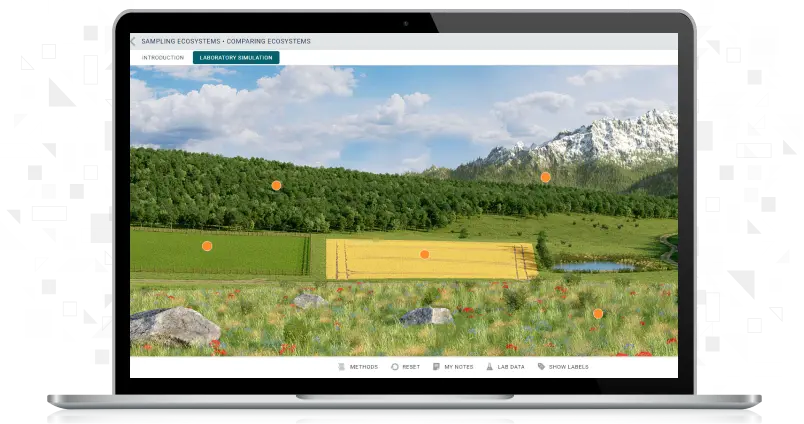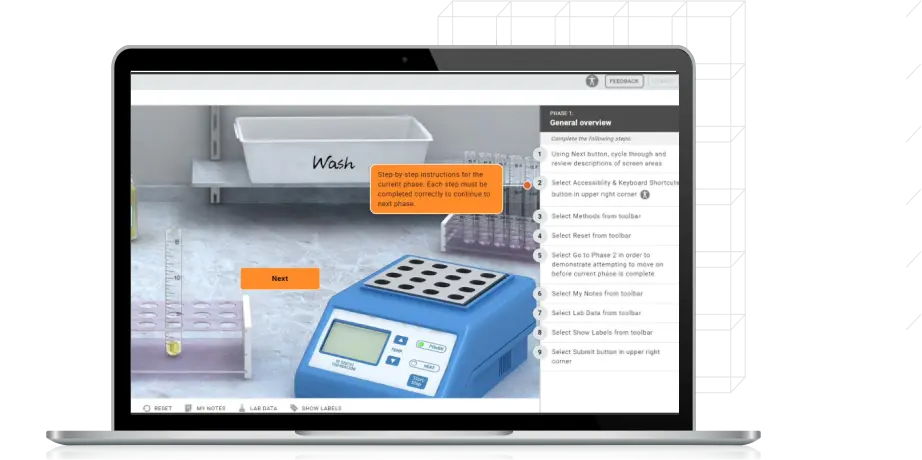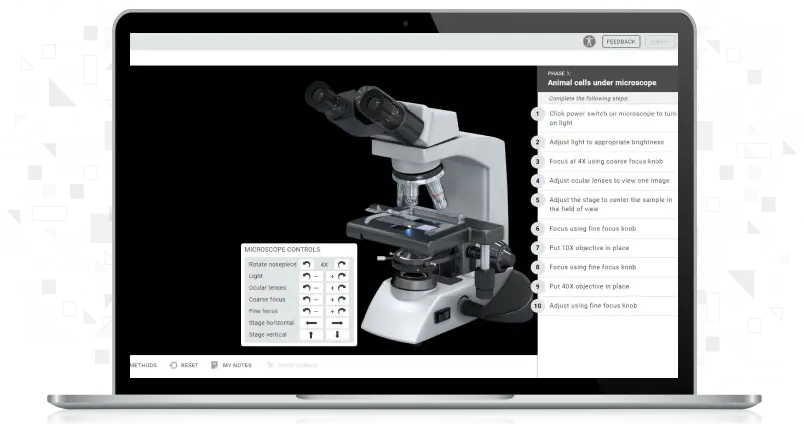
Sampling Ecosystem: Comparing Ecosystems
In this simulation, you will select two different ecosystem sampling sites, formulate hypotheses about the differences between the two sampling sites, compare their abiotic and biotic factors, evaluate the data, and determine whether it supports your hypotheses.


